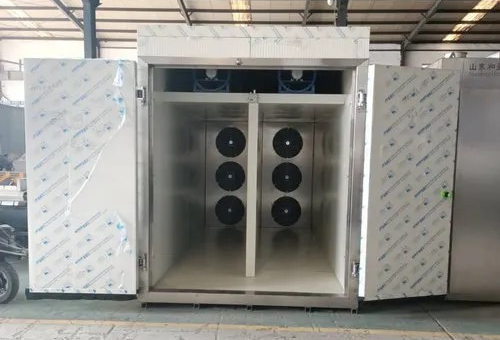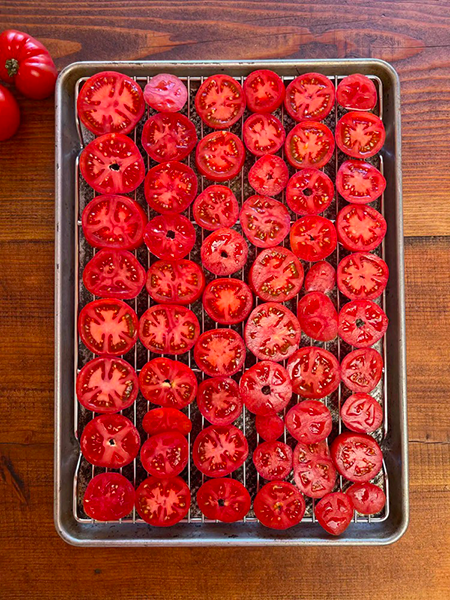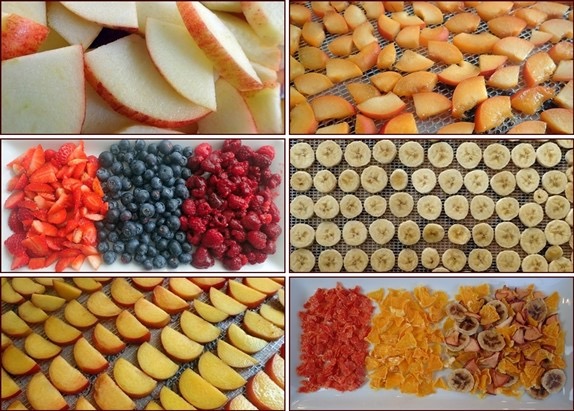
Content Menu
● Understanding Room Type Drying Machines
>> Key Features
● Customization Options for Room Type Drying Machines
>> 1. Tray and Trolley Design
>> 2. Temperature Range
>> 3. Energy Source
>> 4. Size and Capacity
>> 5. Control Systems
>> 6. Humidity Control
>> 7. Air Flow Patterns
>> 8. Material Construction
● Benefits of Room Type Drying Machines
>> 1. Enhanced Food Preservation
>> 2. Nutritional Retention
>> 3. Cost Efficiency
>> 4. Environmental Sustainability
>> 5. Product Diversification
>> 6. Year-Round Availability
● Applications of Room Type Drying Machines
● Emerging Trends in Room Type Drying Machines
>> 1. IoT Integration
>> 2. Artificial Intelligence
>> 3. Hybrid Drying Systems
>> 4. Eco-Friendly Designs
● Choosing the Right Room Type Drying Machine
● Conclusion
● FAQs
>> 1. What foods can be dried using room-type dryers?
>> 2. How do I choose the right machine for my needs?
>> 3. Does drying affect the nutritional value of food?
>> 4. What are the common issues with room-type dryers?
>> 5. Can I customize my room-type dryer?
● Citations:
Food drying machines, particularly room-type drying machines, play a crucial role in food preservation and processing industries. These machines are designed to remove moisture from food items efficiently while maintaining their nutritional value, texture, and flavor. In this article, we explore the customization options available for room-type drying machines, their benefits, and practical applications.

Understanding Room Type Drying Machines
Room-type drying machines are large-scale food dehydrators designed for industrial use. They rely on controlled environments to dry food products evenly and efficiently. These machines are commonly used for drying fruits, vegetables, meats, herbs, seafood, and other food items.
Key Features
- Adjustable Temperature Settings: Allows precise control for optimal drying of various products.
- Even Air Circulation: Ensures uniform drying across all trays or shelves.
- Customizable Trays and Trolleys: Tailored designs to meet specific drying requirements.
- Energy Efficiency: Reduces operational costs while maintaining superior performance.
- Versatile Applications: Suitable for food processing, pharmaceutical, and agricultural industries.
Customization Options for Room Type Drying Machines
Customization is a critical factor in meeting diverse industrial needs. Here are the primary customization options:
1. Tray and Trolley Design
Customizable trays and trolleys allow manufacturers to adapt the machine to different food types and production capacities. Stainless steel trays with perforated designs improve air circulation and drying efficiency. The spacing between trays can be adjusted to accommodate products of varying thicknesses, ensuring optimal airflow and uniform drying.
2. Temperature Range
The drying temperature can be adjusted between 25°C to 80°C to accommodate various foods like fruits, vegetables, meats, and herbs. Some advanced models offer even wider temperature ranges, allowing for specialized drying processes such as freeze-drying or low-temperature dehydration for delicate herbs and flowers.
3. Energy Source
Machines can be configured to use electricity, coal, gas, or other energy sources based on the user's preference. This flexibility allows businesses to choose the most cost-effective and environmentally friendly option for their specific location and needs. Some models even incorporate renewable energy sources like solar panels to reduce operational costs and carbon footprint.
4. Size and Capacity
Room-type dryers can be tailored to handle batch sizes ranging from 150 kg to over 300 kg per cycle. Larger machines may feature additional trays or chambers. Custom-built units can be designed to fit specific factory layouts or to meet unique production volume requirements.
5. Control Systems
Advanced programmable control systems allow users to set precise drying curves for consistent results. These systems can include touchscreen interfaces, remote monitoring capabilities, and integration with existing factory management software for seamless operation and data collection.
6. Humidity Control
Some advanced room-type drying machines offer humidity control features. This allows for more precise management of the drying process, especially for moisture-sensitive products. By controlling both temperature and humidity, operators can achieve optimal drying conditions for a wide range of food items.
7. Air Flow Patterns
Customizable air flow patterns ensure even drying across all trays. Some machines offer adjustable fan speeds and directional vents to optimize air circulation based on the specific product being dried.
8. Material Construction
While stainless steel is the standard for food-grade applications, some manufacturers offer customization options in terms of material grade or special coatings to meet specific industry requirements or to enhance durability in harsh environments.

Benefits of Room Type Drying Machines
1. Enhanced Food Preservation
Drying extends the shelf life of food products by reducing moisture content, which inhibits microbial growth. This preservation method allows for long-term storage without the need for refrigeration, making it ideal for regions with limited cold storage facilities.
2. Nutritional Retention
These machines preserve essential nutrients like vitamins and enzymes while concentrating flavors. The controlled drying process minimizes nutrient loss compared to other preservation methods, resulting in high-quality dried products that retain much of their original nutritional value.
3. Cost Efficiency
By reducing waste and enabling bulk processing, room-type dryers lower production costs. The ability to process large quantities of food at once leads to economies of scale, reducing labor and energy costs per unit of output.
4. Environmental Sustainability
Energy-efficient designs reduce carbon footprints compared to traditional methods like ovens. Moreover, the extended shelf life of dried products reduces food waste, contributing to overall sustainability in the food supply chain.
5. Product Diversification
Room-type drying machines enable food processors to diversify their product lines. By offering dried versions of their products, companies can expand their market reach and cater to different consumer preferences.
6. Year-Round Availability
Seasonal fruits and vegetables can be dried and stored for use throughout the year, ensuring a steady supply of products regardless of harvest seasons.
Applications of Room Type Drying Machines
Room-type dryers are widely used in various industries:
- Food Processing: Drying fruits, vegetables, meats, seafood, etc. This includes creating snack foods like dried fruit chips, jerky, and vegetable crisps.
- Pharmaceuticals: Preserving medicinal herbs and creating dried ingredients for supplements and medicines.
- Agriculture: Processing grains and seeds for long-term storage or further processing.
- Specialty Foods: Creating dried snacks like fruit leather or granola, as well as ingredients for ready-to-eat meals and instant soups.
- Pet Food Industry: Producing dried pet treats and ingredients for dry pet food formulations.
- Nutraceuticals: Drying functional foods and ingredients for health supplements.
- Cosmetics: Drying botanical ingredients used in natural cosmetics and personal care products.
Emerging Trends in Room Type Drying Machines
As technology advances, several trends are shaping the future of room-type drying machines:
1. IoT Integration
Internet of Things (IoT) technology is being incorporated into drying machines, allowing for remote monitoring and control. This enables real-time adjustments to drying parameters and predictive maintenance, reducing downtime and improving efficiency.
2. Artificial Intelligence
AI algorithms are being developed to optimize drying processes based on historical data and product characteristics. This can lead to improved energy efficiency and consistent product quality across batches.
3. Hybrid Drying Systems
Some manufacturers are combining different drying technologies within a single machine. For example, integrating freeze-drying capabilities with traditional hot air drying can offer more versatility in product processing.
4. Eco-Friendly Designs
There's a growing focus on developing more environmentally friendly drying machines. This includes using recyclable materials in construction, improving energy efficiency, and incorporating heat recovery systems to reduce overall energy consumption.
Choosing the Right Room Type Drying Machine
When selecting a room-type drying machine for your business, consider the following factors:
1. Production Volume: Assess your current and projected production needs to choose an appropriately sized machine.
2. Product Variety: If you plan to dry different types of foods, look for machines with versatile customization options.
3. Energy Efficiency: Compare the energy consumption of different models and consider long-term operational costs.
4. Maintenance Requirements: Look for machines with easy-to-clean designs and readily available spare parts.
5. Regulatory Compliance: Ensure the machine meets all relevant food safety and industry standards for your region.
6. Scalability: Consider whether the machine can be upgraded or expanded as your business grows.
7. Technical Support: Choose a manufacturer that offers reliable after-sales support and training for your staff.
Conclusion
Room-type drying machines offer unparalleled versatility and efficiency in food preservation. Their customizable features make them ideal for meeting diverse industrial needs while ensuring high-quality results. By investing in these advanced systems, businesses can enhance productivity, reduce operational costs, and expand their product offerings. As technology continues to evolve, room-type drying machines are poised to become even more efficient, intelligent, and sustainable, further cementing their importance in the food processing industry.

FAQs
1. What foods can be dried using room-type dryers?
Room-type dryers can process fruits, vegetables, meats, seafood, grains, herbs, and more. They are versatile enough for specialty items like fruit leathers or granola.
2. How do I choose the right machine for my needs?
Consider factors such as batch size, energy source preference (electricity or gas), required temperature range, and specific food types you plan to dry. Also, evaluate your production volume, product variety, and long-term business goals.
3. Does drying affect the nutritional value of food?
Drying preserves most nutrients while concentrating flavors. Vitamin A retention is high during the process; however, proper temperature settings are crucial to avoid nutrient loss. Generally, dried foods retain a significant portion of their original nutritional value.
4. What are the common issues with room-type dryers?
Common problems include inconsistent drying due to overcrowded trays or uneven airflow. Regular maintenance of thermostats and seals ensures optimal performance. It's also important to monitor and adjust humidity levels for sensitive products.
5. Can I customize my room-type dryer?
Yes! Manufacturers offer options such as adjustable trays, temperature settings, energy sources (electricity or gas), and control systems tailored to your specific requirements. Advanced customization options may include IoT integration, specialized air flow patterns, and hybrid drying technologies.
Citations:
[1] https://food-drying-machine.com
[2] https://airtekdehydrator.com
[3] https://airtekdehydrator.com/blog/types-commercial-food-dehydrators/
[4] https://www.istockphoto.com/photos/food-dehydrator
[5] https://www.youtube.com/watch?v=Namf-Ddo_Xo
[6] https://www.gettystewart.com/dehydrating-equipment-what-you-need-to-get-started/
[7] https://www.dehydratefood.info/faq/
[8] https://www.dryeratech.com/troubleshooting-common-issues-with-your-cabinet-type-dehydrator.html
[9] https://food-drying-machine.com/food-drying-equipment/double-door-hot-air-food-drying-oven.html
[10] https://www.dryeratech.com/what-are-some-common-features-to-look-for-in-a-food-drying-machine.html
[11] https://www.ike.cn/video.html
[12] https://harvestright.com/faqs/
[13] https://www.ike.cn/commercial-drying-equipment-for-fruits-and-vegetables.html
[14] https://www.bxdrymachine.com/faq
[15] https://www.linkedin.com/pulse/common-questions-food-dehydrators-aradmachinery
[16] https://www.gemdryers.com/important-food-drying-equipment-features-and-their-commercial-impact/
[17] https://bluealpinefreezedryers.com/collections/freeze-dryers
[18] https://www.shutterstock.com/search/dehydrator-machine
[19] https://a.co/d/0epmCEy
[20] https://www.aromaco.com/faq/food-dehydrators/
[21] https://www.reddit.com/r/dehydrating/comments/s7f59f/troubleshooting_slow_dehydrator/
[22] https://www.hachettebookgroup.com/storey/buying-food-dehydrator/
[23] https://www.globalsources.com/Food-dehydrator/dehydrator-1203163935p.htm
[24] https://www.ike.cn
[25] https://www.istockphoto.com/photos/food-dryer
[26] https://www.istockphoto.com/photos/vegetable-dryer
[27] https://www.dehydratorsamerica.com/category/industrial-food-dehydrators
[28] https://www.youtube.com/watch?v=FfB2KmmHPjo
[29] https://www.dehydratorsamerica.com/category/shop-all
[30] https://www.reddit.com/r/dehydrating/comments/1dh1tn1/question_about_maximum_temperatures_in_dehydrators/
[31] https://harvestright.com/v50/











